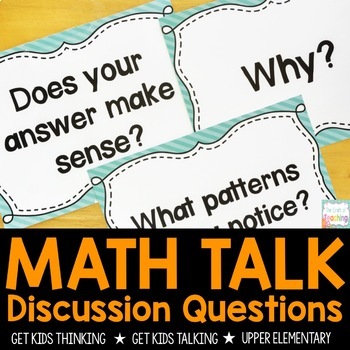Number Talk Discussion Questions | Math Discussion Questions
- PDF
What educators are saying
Description
Number talks and group math discussions in the classroom depend on asking the right questions to get students thinking and talking! These math discussion questions will help your students become confident discussing their mathematical thinking in partners, groups, and in front of the class.
The questions and discussion starters in this resource can be used to make a bulletin board for student reference. They can also be used to help students use and answer specific questions during number talks or math discussions.
Each poster is 8.5 X 11, and a smaller version is included in case you have limited bulletin board space. The smaller version can also be hole punched and put on a metal ring to keep by your small group area.
This resource includes:
- Ideas for use in the classroom
- 20 mathematical questions posters and cards with turquoise background
- 20 mathematical questions posters and cards in black and white
- 8 math talk discussion starter posters and cards with turquoise background
- 5 exit slips for explaining student thinking
You may also like these other math resources:





